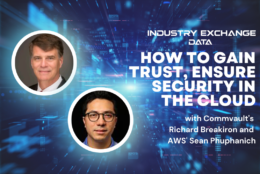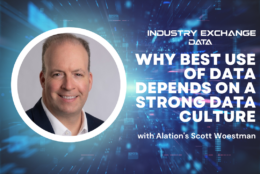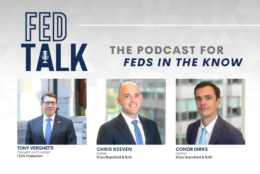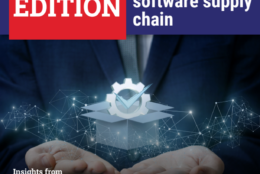SDFM The Business of Defense
-
What’s “explainable AI,” and why is it desirable? In this discussion with experts from ThunderCat Technology and Dell Technologies, learn the answers and find out why it’s critical to create the right teams and processes to take advantage of AI/ML.
May 10, 2023 -
Dataiku’s Doug Bryan has a “more the merrier” approach to promulgating the use of AI. He talks with The Federal Drive’s Tom Temin about why making user-friendly AI capabilities available to the masses will improve adoption and also drive decent ROI.
May 10, 2023 -
As agencies seek to push data to the edge, it’s important to understand that “edge” involves a range of elements that must be managed and secured, explains Dell Technologies’ Kelsey Monaghan. Learn more about what that means for agencies.
May 09, 2023 -
Moving to the cloud requires a plan for securing data, which falls to the agency, while infrastructure cyber falls to the provider. We talk with experts from Commvault and AWS to uncover the best strategies to make this happen successfully.
May 09, 2023 -
Success in using data well to drive decisions and solve problems hinges on establishing a data culture that embraces all users, says Alation’s Scott Woestman. He shares three steps to make that happen with The Federal Drive’s Tom Temin.
May 09, 2023 -
Hosts Bob Leins, CPA® and Tammy Flanagan, Senior Benefits Director NITP, welcome Mary Beth Franklin, Certified Financial Planner®, Contributing Editor for InvestmentNews, President of RetirePro, and foremost Social Security expert.
May 09, 2023 -
Life events. If you have health insurance through your employer, you might — or might not — remember being told that you can update your health plan outside of the annual election period when a…
May 05, 2023 -
With more than 250 Federal Employee Health Benefits providers, the options available to new federal employees are extensive. We talk to experts from Compass Rose Benefits Group to get pointers on what to compare and why.
May 05, 2023 -
Not feeling like you’re in need of Medicare Advantage benefits just yet? There are savings from Compass Rose Medicare Advantage that start right at 65 (even if you’re super healthy). We talk to experts from Compass Rose Benefits Group to get the details.
May 05, 2023 -
Over the next 10 years, the Veterans Affairs Department (VA) expects millions of veterans will be eligible for VA benefits as part of the PACT Act.
May 05, 2023 -
This week, we are continuing coverage on the trifecta of legal risks and the disciplinary processes that federal professionals could face each day that could take away their livelihood.
May 05, 2023 -
The government is grappling with the mechanics of addressing whether their software supply chain is secure. Download our new ebook to get a snapshot from leaders at CISA, the IT Industry Council and DoD’s National Counterintelligence and Security Center into current efforts.
May 04, 2023 -
Philip Zelikow, co-author of the new book "Lessons from the COVID War,” has an important finding as the U.S. still grapples with the tough questions from the pandemic.
May 04, 2023 -
During this exclusive CISO Handbook webinar, moderator Justin Doubleday and guest Pat Gould, director of the Cyber and Telecommunications Portfolio at the Defense Innovation Unit will explore cyber and modernization initiatives at DIU. In addition, Matt Lembright, director of federal applications at Censys, will provide an industry perspective.
May 03, 2023 -
“3GPP NTN would add coverage in areas that just aren't practical to cover today,” said Steve Vogelsang, chief technology officer of Nokia’s federal division. “It can bring service to certain parts of the world where ground-based infrastructure lacks the reliability and resiliency needed on today’s battlefield.
May 02, 2023















